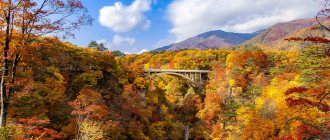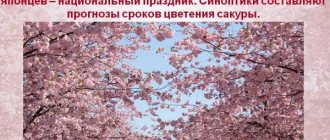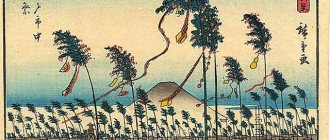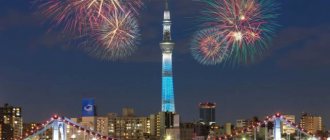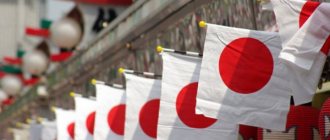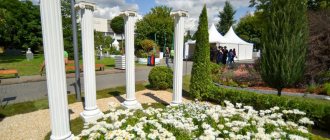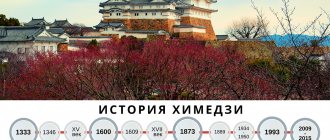These "flower walks" usually take place in areas that are carefully landscaped and landscaped months before the bloom to provide a platform for guests to admire the beauty of nature. The idea itself is quite simple, but look how impressive it looks when executed! The fact is that the Japanese take some type of flower and literally plant dozens of hectares with it to create huge colorful carpets covering fields, hills and gardens. Suddenly, simple, cute flowers that grow in a chaotic manner in a flower bed in front of your house turn into delightful landscapes that will take the breath away of many.
Flower festivals often turn into large-scale celebrations, where you can stock up on delicious traditional food and drinks, as well as ice cream that supposedly tastes like the celebrant plant. Larger celebrations are even prepared to offer special souvenirs to guests that will preserve only the best memories of this trip to Japan.
In short, we want to say only one thing: flower festivals in Japan are a serious event! So why not join one of them on your next trip?
Here are five plants whose bloom you should never miss:
Forget-me-not
Completely covering the hills of the Hitachi seaside park, this soft blue flower with a white core turns the panorama of the most ordinary field into an extremely unusual landscape. Considering that Hitachi Park is adjacent to the sea coast and boasts vast green spaces, the blooming of forget-me-nots is a truly magical sight.
Flowering time: April–May
Shibazakura (phlox)
You're probably thinking: who gave in to these phloxes? But believe me, as soon as you get to the Shibazakura flowering festival, you will not be able to stop smiling from ear to ear - it is such a pleasant and positive sight. There is another nice thing: phloxes come in a variety of colors - for example, white, blue, purple, and numerous shades of pink. Most often, phloxes are planted in clear beds, without mixing colors with each other, thanks to which magnificent pictures appear in the fields in the spring. The most famous Shibazakura festival is held in Yamanashi Prefecture: in addition to phlox, you can also enjoy the view of Mount Fuji. However, the festival in Saitama Prefecture, Chichibu City, also deserves your attention!
Flowering time: March–June
Fuji (wisteria)
Wisteria is a climbing plant in the form of a tree surrounded by densely leafy vines. You've never seen hanasampo like this before! Wisterias are most often arranged on supports or trellises that form long arches; bright multi-colored vines can hang all the way to the ground. A walk through such a wisteria tunnel can be called truly enchanting! Add to this the bright, interesting lighting and festival music, and you will feel as if you have been transported to a wonderful new world. Popular places to view wisteria are in Tochigi (Ashikaga Flower Park) and Fukuoka (Kawachi Fujien).
Flowering time: April–May
On April 8, Buddhists in Japan celebrate the Hana Matsuri or Kambut(ts)u-e holiday. It is dedicated to the birth of Buddha, and is often referred to as the Flower Festival. Festive events dedicated to the birthday of the founder of one of the world's religions were known at the beginning of our era, although they gained popularity in the second half of the 19th century. All ceremonial events held on this day in Buddhist temples in Japan, as well as on the streets of cities and villages, and in homes, are in one way or another connected with the legend telling about the birth of Buddha. Its summary boils down to the fact that Queen Maya, who saw a white elephant in a dream, received a message from the gods, which said that she would soon give birth to a son who would become the Enlightened One. Shortly before giving birth, the queen went to her parents and along the way she found herself in the wonderful garden (or grove) of Lumbini, which was a place like paradise, where fragrant flowers bloomed around on the ground and on the trees. Queen Maya, bending down to pick a flower, suddenly went into labor. Her son was born in the middle of this wonderful garden of flowers. At that moment, 9 dragons descended from the sky and washed the newborn’s head with flower nectar, and, according to another version, with tea from hydrangea petals. Minor discrepancies do not change the essence of the legend even when, according to one of these versions, the ablution occurred because the dragons touched the trees with their tails, and the dew and nectar that fell from them washed the Buddha’s head. Everything that is said in the legend is reflected in the traditions of celebrating this day. In Buddhist temples, a special altar is decorated in which a statue of a small Buddha decorated with flowers is displayed. The statue is located in a bowl-pool. Each Buddhist, coming to the temple, brings flowers with him, approaches the altar and, using a special ladle, pours tea from hydrangea petals on the head of the statue of the newborn Buddha. The monks brew this drink in large quantities, treating it to parishioners, who, in turn, can take the tea home with them, where they drink it with their family and friends. It is believed that Amatya or Amacha tea on this day is healing. The entire ceremony symbolizes the legendary events in the Lumbini garden. On this day, cities are decorated with thousands of flowers, paper lanterns, and festive processions take place through the streets, the participants of which are dressed in elegant national clothes. Children are given special attention on this holiday, also dressed in bright colors. Among the marching Buddhists there is certainly a cart with a statue of a white elephant installed on it, which appeared to the Mayan queen in a dream.
On the elephant is a seated baby Buddha, on whose head sweet flower tea is poured, and smartly dressed children approach the statue. What is also very noteworthy about this holiday is that by April 8, sakura blooms in many regions of Japan and the first flowers on earth bloom, turning all the country’s parks and squares into marvelous gardens reminiscent of the Lumbini garden. The earth and all living things wake up from sleep and meet the rays of the spring sun.
Lycoris radiata
These unusual plants are distinguished by their elongated shape: the tall stem is practically devoid of leaves, but the bud at the very top of the head blooms with a bright scarlet spot. Licorice often grows near rivers, and their poisonous bulbs are used in pesticides used to treat nearby rice fields against parasites and pests. The bright shade of Lycoris radiata adds rich splashes of color not only to the forest floor, but also to the shady canopy of tree crowns. Although lycoris looks very pretty in a bouquet, in Japanese culture it is often associated with death and is used at funerals. So try never to give it as a gift!
One of the most popular places where you can enjoy the lycoris blossom is in Saitama Prefecture, Koma City.
Flowering time: September–October
Hanami - national cherry blossom festival in Japan
One of the national and most beloved holidays in Japan is called Hanami, which translated into Russian means “admiring flowers.” It is strongly associated with a picnic, a good snack and hot tea, which must certainly be shared with loved ones and colleagues working in the garden under the cherry blossoms.
The Hanami tradition supposedly originated in the imperial court as early as the 3rd century AD, but became most widespread during the Heian dynasty (794-1185). Later, the holiday acquired national significance and began to be celebrated throughout the Land of the Rising Sun. One of the most famous Hanami celebrations took place in 1598, when a 1,300-person procession was led by warlord Toyotomi Hideyoshi to celebrate the defeat of the separatist clans. The event is often mentioned in Japanese epics and is often staged in local theaters. During the reign of the Tokugawa shogun (1603-1867), many cherry trees were brought to the new capital of the Empire - the city of Edo - and the tradition of celebrating Hanami had finally spread among all levels of society. From this time on, sakura selection began, as a result of which today there are more than 300 varieties of Japanese cherries in the island state.
Sakura
Of course, not a single leaf of flowers blooming in Japan during the spring season is complete without the most famous holiday, which is celebrated throughout the country. Given the incredibly short flowering time (usually about a week, but sometimes longer if the weather cooperates), the peak season lasts only a few days. Sakura is not only a harbinger of the changing seasons, but also a symbol of the fleeting nature of life. Cherry trees are planted throughout Japanese gardens and parks, and the most popular way to pay tribute to them is with hanami picnics held under the flowering branches. Usually accompanied by incredible amounts of alcohol, hanami is a time to relax and enjoy the joyful atmosphere that the first sunny days of the new year bring.
Flowering time: March–May
The flowering times in this article are not accurate and are only used as a rough guide for you and your Japan tour. The flowering time of different plants varies each year depending on location and weather, and the peak season can pass very quickly. Therefore, we would recommend that you carefully plan the location and time of your trip, based on forecasts for the beginning and peak of the flowering season.
Flower festivals in Japan: TOP 7 flower fields
Even people who are not particularly interested in Japanese culture and traditions know about the Hanami holiday in Japan, associated with the cherry blossom season, when the whole country is buried in soft pink shades. But few people know that throughout the year the Japanese celebrate many other, no less colorful flower festivals. These events, although not as grandiose as cherry blossoms, are still incredibly interesting. Below are the most colorful flower festivals in Japan that are worth visiting.
Cosmos Festival
This flower festival in Japan is held in the autumn in the vastness of Showa Park. From mid-October to mid-November, here you can admire the bright colors of blooming cosmos, whose flowers cover all the hilly meadows of the park.
The huge park area of Showa is a great place for nature walks. In addition to the abundance of cosmos, many other flowers grow here, and many birds live among the trees. There are bicycle paths throughout the park, and its territory is decorated with picturesque fountains and decorative ponds.
Fuji Shibazakura Festival
This unique Japanese flower festival occurs during the peak of the country's spring blooms in April and May. At this time, Japan is literally drowning in the pink colors of cherry blossoms.
But the blooming fields of phlox subulates also add similar colors to the surrounding nature. The Fuji Shibazakura Festival is one of the best celebratory events on this occasion and is definitely worth a visit.
The name of the holiday can be translated as “sakura lawns” or “pink moss”. Firstly, the blooming of phlox really resembles the colors of sakura, only on the ground. Secondly, these flower mats really are like pink moss covering the ground.
On Shibazakura Hill and its surroundings in Hitsujiyama Park in Chichibu, more than 800 thousand of these flowers grow, which, combined with cherry blossoms against the backdrop of Mount Fuji, creates a truly mesmerizing spectacle.
Hokuryu Sunflower Festival
Hokkaido is famous for its many attractions, but few people know that this island is the unofficial sunflower capital of Japan. The most extensive and beautiful sunflower fields here are located near the village of Hokuryu.
From mid-July to mid-August, the Japan Flower Festival is held here, where you can admire approximately 1.5 million sunflowers. The best time to travel to Hokuryu is August, when all the hills around the village are surrounded by golden colors.
Red Spider Lily Festival
Scientifically, these beautiful flowers are called Lycoris radiata. In Japanese culture, they have many poetic names, shrouded in a mystical aura.
The red spider lily in Japan is also known as the “ghost flower”, and under more terrifying names - “demon lily”, “flower of the dead”. All these frightening names are connected only with the fact that most often these flowers grow in cemeteries.
The Demon Lily Festival is held in Kinchakuda Park in Hidaka, near Tokyo. During the peak flowering season in mid to late September, the fields around this area are adorned with numerous blooming lycories. Although these flowers are native to China, they also play an important role in Japanese culture as a symbol of heaven.
Wisteria Festival at Kawachi Fuji Garden
There are several iconic places in Japan where you can admire wisteria blooming. But the best of them all is the Kawachi Fuji Garden, located in the city of Kitakyushu in Fukuoka Prefecture. The ideal period to visit it is from late April to mid-May, which is when wisteria blooms in Japan.
The cascading inflorescences of these flowers impress with an incredible palette of shades - from pale red, pink and snow-white to dark purple, lilac and blue. To visit this private garden during the season, tickets must be purchased in advance.
Lavender Festival at Tomita Farm
In addition to sunflowers, Hokkaido is also home to some of Japan's most beautiful lavender fields. The most colorful summer flower festival in Japan is held at Tomita Farm near Nakafurano. Ideally, you should come here in July.
In addition to the lavender fields at the Tomita farm itself, you can walk around the area in search of wild lavender. For example, walk to the neighboring town of Furano or to the foot of the volcanic Mount Tocati, where these beautiful flowers also grow.
Hitachi Seaside Park
If you want to admire the beauty of flower festivals in Japan without reference to seasonal blooms, then you should choose Hitachi Park in Ibaraki for a walk. A wide variety of flowers grow here, so you can contemplate their colorful blooms at any time of the year.
But it’s still better to visit this flower park in April-May, when more than 4.5 million “blue-eyes” or, scientifically, nemophilas bloom here. It seems that their light blue colors merge with the spring azure sky on the horizon.
Hitachi Park is no less beautiful in the fall, during the momiji season, when in October its entire territory is buried in crimson-golden colors.
